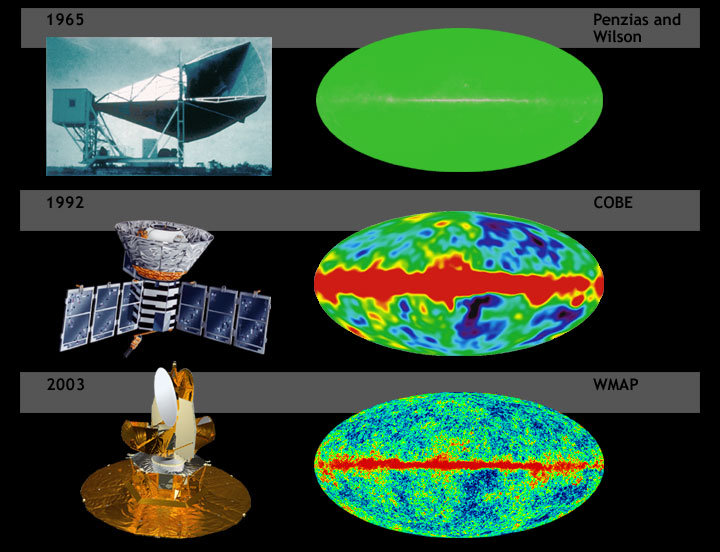Fitxer:BigBangNoise.jpg
BigBangNoise.jpg (720 × 552 píxels, mida del fitxer: 103 Ko, tipus MIME: image/jpeg)
Historial del fitxer
Cliqueu una data/hora per veure el fitxer tal com era aleshores.
| Data/hora | Miniatura | Dimensions | Usuari/a | Comentari | |
|---|---|---|---|---|---|
| actual | 21:38, 10 març 2014 |  | 720 × 552 (103 Ko) | Mys 721tx | Reverted to version as of 05:42, 22 January 2011: PLANCK data is done by ESA |
| 07:42, 22 gen 2011 |  | 720 × 552 (103 Ko) | Iluvalar | Increased saturation of the last image | |
| 15:23, 10 des 2004 |  | 720 × 552 (87 Ko) | Angeloleithold | A Brief History of Background Radiation{{PD-USGov-NASA}} |
Ús del fitxer
La pàgina següent utilitza aquest fitxer:
Ús global del fitxer
Utilització d'aquest fitxer en altres wikis:
- Utilització a ar.wikipedia.org
- Utilització a bg.wikipedia.org
- Utilització a cs.wikipedia.org
- Utilització a en.wikipedia.org
- Utilització a en.wikiversity.org
- Utilització a es.wikipedia.org
- Utilització a et.wikipedia.org
- Utilització a fr.wikipedia.org
- Utilisateur:Alain r/Brouillons/Fond diffus cosmologique
- Portail:Cosmologie/Image du mois
- Big Bang
- Portail:Cosmologie/Image du mois=04
- Wikipédia:Projets pédagogiques/Cégep de Chicoutimi/astro
- Wikipédia:Projets pédagogiques/Université du Québec à Chicoutimi/calendrier
- Cosmologie observationnelle
- Wikipédia:Projets pédagogiques/Cégep de Chicoutimi/Fond diffus cosmologique
- Fond diffus cosmologique
- Liste de synonymes de « fond diffus cosmologique »
- Utilització a gl.wikipedia.org
- Utilització a ht.wikipedia.org
- Utilització a hu.wikipedia.org
- Utilització a it.wikipedia.org
- Utilització a ko.wikipedia.org
- Utilització a mwl.wikipedia.org
- Utilització a pl.wikipedia.org
- Utilització a pt.wikipedia.org
- Utilització a pt.wikiquote.org
- Utilització a ru.wikipedia.org
- Utilització a sk.wikipedia.org
- Utilització a sl.wikipedia.org
Vegeu més usos globals d'aquest fitxer.



